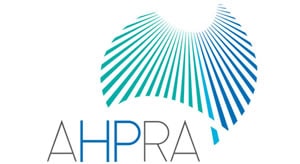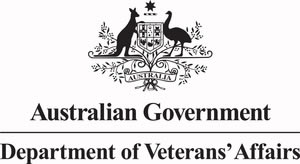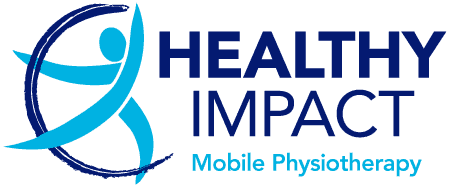What is Finch therapy and how it works
Finch therapy is a highly effective and simple corrective exercise program that restores balance to the whole musculoskeletal system. It provides long-term outcomes, saving you time and money. No need for regular ongoing treatments with other allied health professionals. Finch therapy is a highly effective treatment for non-specific pain and tightness.
This means Finch therapy is a useful tool when injuries to joints, bones, ligaments, tendons, and muscles have been ruled out with a thorough Physiotherapy assessment. Often if you are not improving or require ongoing treatments for tightness and pain, Finch therapy can help identify the cause of your symptoms and fast-track your recovery.
It can be used in conjunction with other treatments as nothing you do will interfere with the Finch therapy process.
Finch therapy:
- Provides rapid relief from pain and joint stiffness
- Is easy and simple, non-invasive & painless
- Is safe for the whole family
- Saves you money. Only 3 sessions, if done as prescribed. Home exercises only required for 2 weeks with long-term outcomes.
- Is highly effective. 70% of clients report feeling better long-term after 3-5 consults, improving your mental and emotional health.
- Does not require Feedback. Great for people with multiple areas of pain and Non-Verbal clients.
- Is done Fully Clothed
- Is Tracked with a thorough Assessment process using validated outcome measures (Evidence-Based Practice).
Finch therapy is a highly effective tool in treating:
- Sciatica and back pain
- Shoulder and neck pain
- Hip pain and bursitis
- Migraines and headaches
- Achilles and plantar fasciitis
- Delayed onset muscle soreness (DOMS)
- Poor posture
How Finch therapy works? The logic behind this approach.
As a physical therapist, we work with the whole body, which includes joints, bones, ligaments, neural tissue, fascia, tendons, and muscles. Out of all these, the main tissue we can influence is the muscle.
How can we change the loading on joints, ligaments, neural tissue, tendons, fascia, and other muscles all at once and provide a long-term change that will last for months or even years? By changing the loading on kinetic or fascial chains within the body. By strengthening key muscles that directly impact and load these kinetic or fascial chains in the body.
What holds your body up against gravity? Your muscles, which are activated by electrical and chemical signals from your brain via your nerves. If a nerve pathway connected to a key postural muscle in your body is not activating correctly on one side of your body (left or right), then your bones will drop towards the ground because of the effect of gravity on your body. This will create a shearing force across your joints, ligaments, and neural tissue, and it will shorten some of your muscles while lengthening other muscles. This will likely result in reduced range of movement, tightness and often pain.
This explains why clients often present with tightness and pain in multiple areas and why traditional treatments often only provide short-term relief and why clients require regular visits to manage their symptoms.
Correction without manipulation
This can be easily corrected without manipulation, mobilisation, stretching, massage, or manual therapy techniques like acupuncture or needling. By strengthening these key muscles on the weaker side, it instantly improves the loading on your joints, ligaments, neural tissue, and restores muscles to their correct length. With a few easy home activation exercises targeted to these key muscles only on the weaker side for only 2 weeks, as assessed by a Finch therapist, we can ensure you a long-term outcome, lasting for months or years without regular ongoing treatment or exercises.
This reduces the number of allied health consultations, saving you time and money. Thousands of our clients have reported having ongoing weekly, fortnightly or monthly chiropractic, osteopathy, or various types of massage before trying Finch therapy.
After assessing and treating over 20,000 clients in the past 15 years, I have found that everyone has at least eight key muscle imbalances from 4 years of age and older, even if they have reported no tightness or pain. I believe we are born with them. Everyone has them unless they have been treated by a Finch therapist. Other allied health treatments only treat symptoms of non-specific tightness and pain and are unable to identify these muscle weaknesses as they are not trained in the Finch therapy assessment protocol.
For example, functional leg length differences are treatable in one session with one easy home exercise and it lasts for years without further treatment or exercises. Because we are strengthening the key muscle that causes it.
The assessment protocol has been standardised, so that the one-sided muscle weaknesses can be easily identified without you telling the treating practitioner your symptoms. You can even accurately assess clients who are non-verbal, that have multiple or complex pain history, or have a mental health history with ease. Validated clinical and patient-reported outcome measures are used to ensure treatment is delivering effective outcomes, ensuring Evidence-Based Practice.
Monitoring your progress is important to ensure you are improving and you are getting the most appropriate treatment. If you are not responding to treatment, it is important to identify other likely causes and refer you to the appropriate health professional in a timely manner, so you can get the right treatment as early as possible.
Finch therapy can be used:
- to directly identify and treat non-specific tightness or pain symptoms.
- to improve overall musculoskeletal health and prevent acute injuries. Great for recreational and competitive athlete’s.
- ss an adjunct in rehabilitation to restore correct musculoskeletal function and reduce the risk of complications throughout the rehabilitation recovery process.
- to diagnose by elimination. Using clinical reasoning to help narrow down the likely source of the symptoms and ensure referral to the appropriate health professional is made in a timely manner.
Too good to be true
It sounds too good to be true, I know. That is what I thought too when was first introduced to Finch therapy. But to this day, I find it to be an amazing tool and have helped thousands of people suffering from chronic pain. We always discuss openly with our clients the Pros and Cons of the therapy, and inform them the practitioner is trained, accredited, and has over 12 years of clinical experience in Finch therapy before asking for consent to use Finch therapy as part of their treatment.
Who do we work with?
We work with NDIS, Comlink, CTP Insurance, Enhanced Primary Care (EPC), Workcover and Private clients. If you would like to know how Finch therapy can specifically help you, please get in touch.
See more about Finch Therapy
Reference list
Bialosky JE, Bishop MD, Price DD, Robinson ME, George SZ. The mechanisms of manual therapy in the treatment of musculoskeletal pain: a comprehensive model. Man Ther. 2009 Oct;14(5):531-8. doi: 10.1016/j.math.2008.09.001. Epub 2008 Nov 21. PMID: 19027342; PMCID: PMC2775050.
De Zoete, R. M., Armfield, N. R., McAuley, J. H., Chen, K., & Sterling, M. (2020). Comparative effectiveness of physical exercise interventions for chronic non-specific neck pain: a systematic review with network meta-analysis of 40 randomised controlled trials. British journal of sports medicine.
Dueñas L, Aguilar-Rodríguez M, Voogt L, Lluch E, Struyf F, Mertens MGCAM, Meulemeester KD, Meeus M. Specific versus Non-Specific Exercises for Chronic Neck or Shoulder Pain: A Systematic Review. Journal of Clinical Medicine. 2021; 10(24):5946. https://doi.org/10.3390/jcm10245946
El-Tallawy, S.N., Nalamasu, R., Salem, G.I. et al. Management of Musculoskeletal Pain: An Update with Emphasis on Chronic Musculoskeletal Pain. Pain Ther 10, 181–209 (2021). https://doi.org/10.1007/s40122-021-00235-2
Lim, Y. Z., Wang, Y., Cicuttini, F. M., Hughes, H. J., Chou, L., Urquhart, D. M., … & Hussain, S. M. (2020). Association between inflammatory biomarkers and nonspecific low back pain: a systematic review. The Clinical journal of pain, 36(5), 379-389.
McSwan J, Gudin J, Song XJ, Grinberg Plapler P, Betteridge NJ, Kechemir H, Igracki-Turudic I, Pickering G. Self-Healing: A Concept for Musculoskeletal Body Pain Management – Scientific Evidence and Mode of Action. J Pain Res. 2021 Sep 21;14:2943-2958. doi: 10.2147/JPR.S321037. PMID: 34584448; PMCID: PMC8464648.
National Center for Complementary and Integrative Health. Chronic Pain: What You Need To Know. .
Tagliaferri, S. D., Miller, C. T., Owen, P. J., Mitchell, U. H., Brisby, H., Fitzgibbon, B., … & Belavy, D. L. (2020). Domains of chronic low back pain and assessing treatment effectiveness: a clinical perspective. Pain Practice, 20(2), 211-225.
Tan G, Alvarez JA, Jensen MP. Complementary and alternative medicine approaches to pain management. J Clin Psychol. 2006 Nov;62(11):1419-31. doi: 10.1002/jclp.20321. PMID: 16937354.









